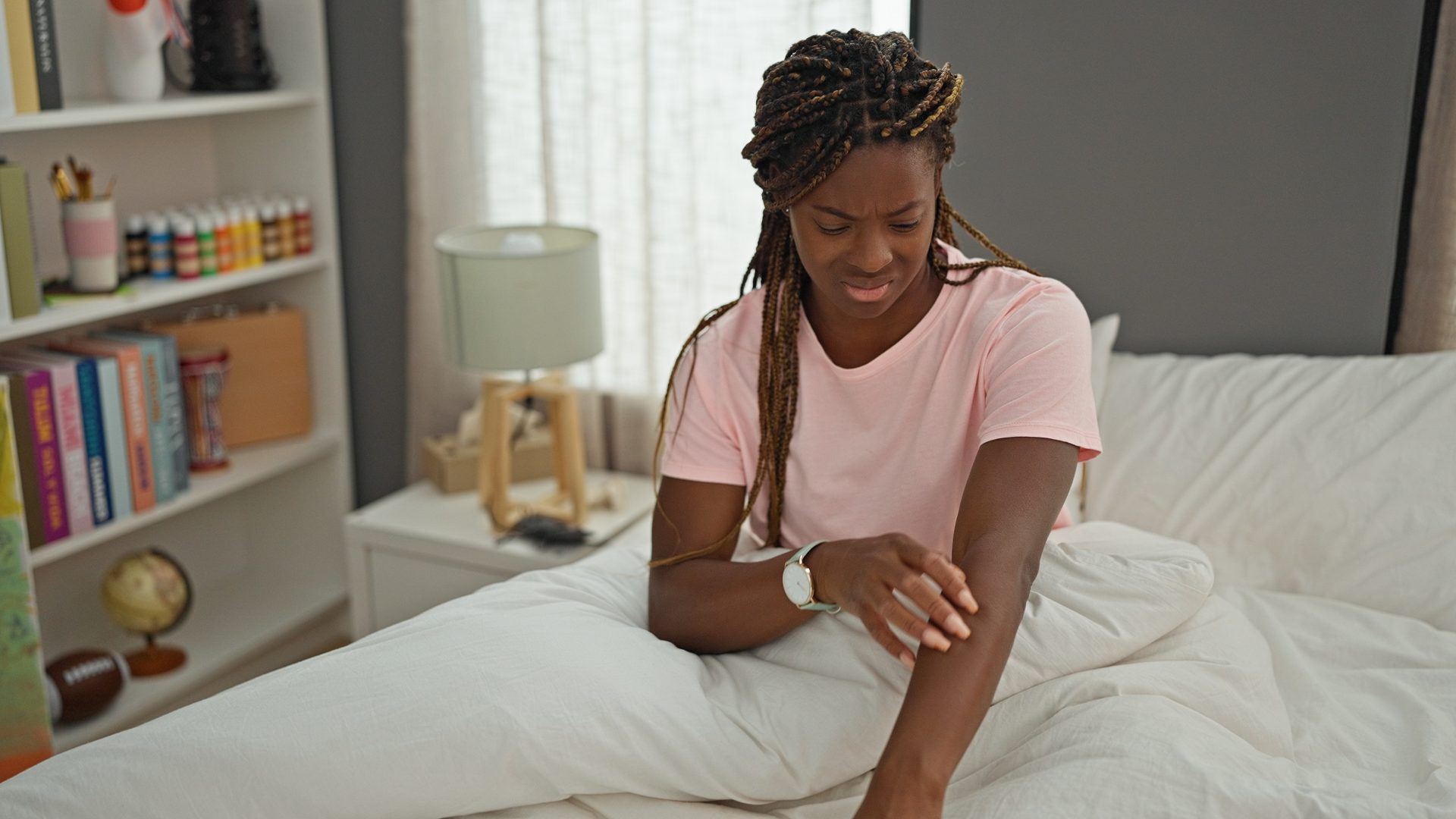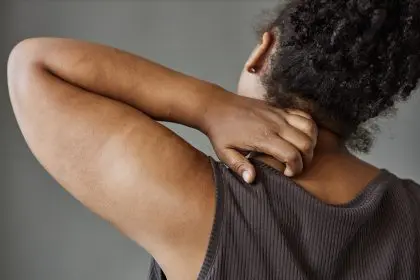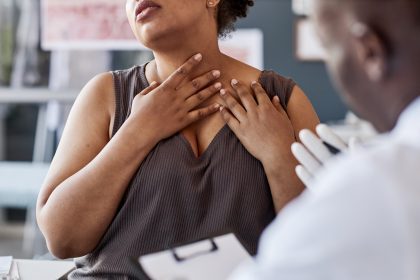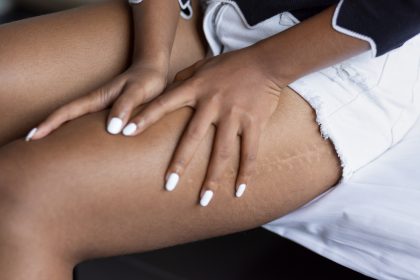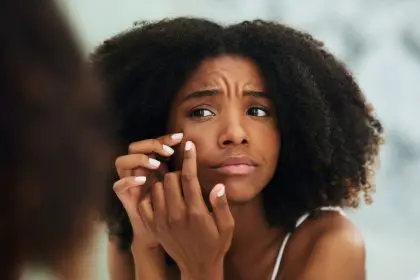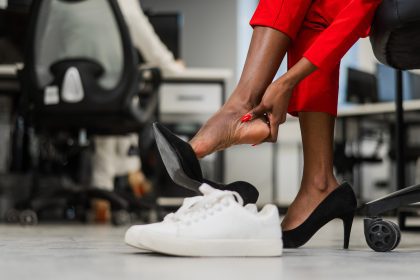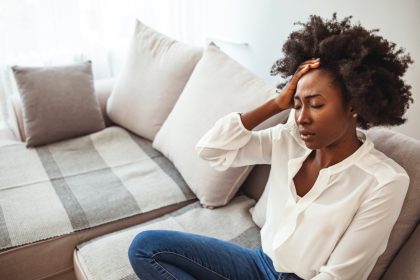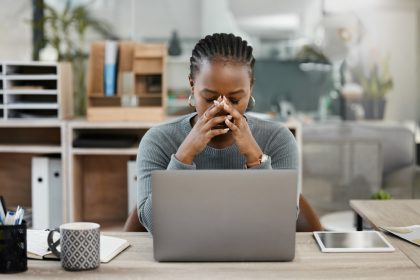Lichenification – a condition where skin becomes thickened, rough, and darkened due to constant scratching or irritation – affects thousands of Americans each year. Though not typically dangerous, this skin change can cause discomfort, affect confidence, and indicate underlying health issues requiring attention. Understanding the causes, symptoms, and treatments of lichenification can help those experiencing this condition find relief and prevent recurrence.
What causes lichenification to develop
Lichenification isn’t a standalone condition but rather a response to persistent skin irritation. This skin change occurs when an area undergoes repeated scratching, rubbing, or friction over extended periods. The skin reacts by thickening its outer layer, creating rough, leathery patches with exaggerated skin lines.
The condition appears in two distinct forms. Primary lichenification, also known as lichen simplex chronicus, develops without an underlying skin disorder. Triggers include psychological factors like stress and anxiety, physical irritants such as tight clothing or bug bites, extremely dry skin, or nerve irritation.
Secondary lichenification occurs as a complication of existing skin conditions that cause intense itching. Common culprits include eczema, psoriasis, and various skin infections. The persistent discomfort leads to scratching, which then creates the characteristic thickened skin patches.
Understanding the root cause helps determine the most effective treatment approach, making proper diagnosis essential for managing this challenging skin condition.
How lichenification appears on different skin tones
Lichenification presents differently depending on skin tone, making awareness of these variations crucial for proper identification. On lighter skin, lichenified areas typically appear as thick, scaly plaques with a reddish-brown coloration that stands out against surrounding tissue.
In darker skin tones, lichenification may manifest as patches of purple, gray, or deep brown discoloration. These areas are particularly noticeable around joints and areas where skin naturally bends, such as elbows, knees, and the back of the neck.
This variation in appearance across skin tones can sometimes lead to delayed diagnosis, particularly for individuals with deeper skin colors where early signs of underlying conditions like eczema might be less immediately obvious to healthcare providers unfamiliar with diverse skin presentations.
The difference in appearance highlights the importance of healthcare providers being trained to recognize dermatological conditions across all skin tones to ensure timely intervention and treatment.
Common symptoms that indicate lichenification
Recognizing lichenification involves identifying several distinctive characteristics. The affected skin develops a leathery texture that feels noticeably different from surrounding areas. When examined closely, these patches reveal deep lines forming distinctive crisscross patterns not present in healthy skin.
The thickened areas often appear dry and may feature small bumps or a rough surface. Color changes accompany these textural differences, with affected areas potentially becoming gray, reddish-brown, yellow, or darker than surrounding skin, depending on the individual’s natural skin tone.
Lichenification commonly affects specific body regions, including the nape of the neck, scalp, arms, thighs, and genital areas like the scrotum or vulva. These locations often correspond to areas that are easily reached for scratching or frequently exposed to friction from clothing or movement.
While not typically painful, lichenified areas often remain itchy, perpetuating the scratch-itch cycle that worsens the condition over time. This persistent discomfort represents one of the most challenging aspects of living with lichenification.
Who faces higher risk of developing lichenified skin
Several factors increase the likelihood of developing lichenification. Secondary lichenification occurs more frequently in people with pre-existing skin conditions like eczema, psoriasis, or chronic skin infections that cause persistent itching.
Primary lichenification shows demographic patterns, appearing more commonly in women between ages 30 and 50. This form correlates strongly with psychological factors, particularly anxiety disorders, high stress levels, and obsessive-compulsive tendencies that may manifest as repetitive scratching behaviors.
Research indicates that lichenification occurs more frequently in individuals with darker skin tones. This heightened prevalence likely stems from delayed diagnosis of underlying conditions like eczema, whose early symptoms may present differently or be less visible on deeper skin tones, allowing the condition to progress before treatment begins.
Additionally, people working in occupations involving frequent skin friction or irritation, those living in extremely dry climates, and individuals with certain nerve disorders affecting skin sensation face elevated risk for developing lichenified skin patches.
Effective treatments breaking the itch-scratch cycle
Managing lichenification requires breaking the persistent itch-scratch cycle that perpetuates and worsens the condition. Treatment approaches vary based on severity but typically begin with addressing any underlying skin conditions contributing to the problem.
Topical treatments form the foundation of most lichenification management plans. Prescription-strength corticosteroid creams reduce inflammation and itching, while calcineurin inhibitors like tacrolimus provide non-steroidal alternatives for sensitive areas. Capsaicin-containing preparations can desensitize nerve endings in affected skin, diminishing itch sensations.
Oral medications may become necessary for severe cases. Antihistamines help control itching, particularly at night when scratching often occurs unconsciously during sleep. For cases with significant anxiety components, healthcare providers might prescribe anti-anxiety medications to address psychological triggers.
Severe or resistant lichenification may respond to more intensive approaches like phototherapy, which uses controlled UV light exposure to reduce inflammation. In extremely persistent cases, healthcare providers occasionally recommend surgical removal of thickened skin patches, though this remains relatively uncommon.
Daily management strategies for lichenified skin
Beyond medical treatments, daily skincare routines play a crucial role in managing lichenification and preventing recurrence. Establishing effective self-care practices helps maintain skin health and break the cycle of irritation and scratching.
Moisturizing represents the cornerstone of lichenification management. Applying thick creams or ointments immediately after bathing helps lock moisture into the skin. Petroleum jelly-based products often work particularly well for extremely dry, thickened areas.
Bathing practices make a significant difference in skin condition. Keeping showers lukewarm rather than hot, limiting bath time to 10-15 minutes, and using gentle, fragrance-free cleansers helps preserve the skin’s natural moisture barrier. Patting rather than rubbing skin dry further reduces irritation.
Controlling environmental factors can prevent flare-ups. Using humidifiers in dry environments, wearing loose-fitting, breathable clothing, and avoiding known irritants helps maintain skin comfort. Keeping fingernails trimmed short minimizes damage from unconscious scratching.
For individuals where stress triggers scratching behaviors, implementing stress-reduction techniques proves valuable. Options include meditation, deep breathing exercises, and progressive muscle relaxation. In some cases, cognitive behavioral therapy helps address unconscious scratching habits by developing awareness and alternative responses.
The journey toward healthier skin requires patience and persistence. While lichenification develops over extended periods, recovery similarly takes time as the skin gradually returns to its normal thickness and appearance. With consistent treatment and proper skincare, most individuals experience significant improvement in their condition.
Understanding lichenification’s causes, recognizing its varied appearance across different skin tones, and implementing appropriate treatments empowers individuals to effectively manage this challenging skin condition. Though recovery takes time, breaking the itch-scratch cycle allows skin to heal and prevents future thickening, restoring both physical comfort and confidence.

